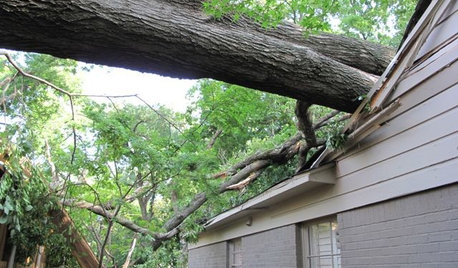No Spark Mystery in an old engine.
clifh21730
12 years ago
Related Stories

MOST POPULARHouzz Tour: A Playful Home Drawn Up by 8-Year-Old Twins
Plans for this innovative tower home in Melbourne were going nowhere — until the homeowners’ twins came to the rescue
Full Story
DECLUTTERINGCan’t Figure Out What ‘Sparks Joy’? Try This Question Instead
If you can’t decide whether to keep something or let it go, shift your perspective to find the answer
Full Story
REMODELING GUIDESWhat to Know About Engineered Wood Floors
Engineered wood flooring offers classic looks and durability. It can work with a range of subfloors, including concrete
Full Story
KITCHEN DESIGNKitchen Counters: Stunning, Easy-Care Engineered Quartz
There's a lot to like about this durable blend of quartz and resin for kitchen countertops, and the downsides are minimal
Full Story
SMALL HOMESHouzz Tour: An Illinois Loft Sparks Renovation Fever
Home improvement newbies (and newlyweds) find joy and a new income source while redoing their space themselves
Full Story
DECORATING PROJECTSWhat to Do With Old Family Photos
Find out how to research, share and preserve images that offer a connection to the past
Full Story
HOUZZ TOURSMy Houzz: Twister Damage Sparks a Whole Ranch Remodel
A Dallas couple transforms their traditional rambler into a bright, family-centered haven after a tornado
Full Story
HOMES AROUND THE WORLDHouzz Tour: Old Arches, Beams and Stones Become Au Courant
A renovation brings contemporary flair and original charm to a designer’s apartment on the French Riviera
Full Story
DECLUTTERINGA Pro Weighs In on Decluttering the KonMari Way
As Marie Kondo’s Netflix series sparks an organizing blitz, an expert discusses the practicality of 7 KonMari principles
Full Story
FUN HOUZZFairy Doors Unlock Magic at Home
Provide an enchanting touch of mystery with a miniature door for the baseboard or garden. (Adults, you can have one too)
Full Story





tomplum
clifh21730Original Author
Related Professionals
Williamsburg Landscape Contractors · Bridgeview Landscape Contractors · Cockeysville Landscape Contractors · Dallas Landscape Contractors · Fishers Landscape Contractors · Golden Gate Landscape Contractors · Plantation Landscape Contractors · Pleasant Prairie Landscape Contractors · Rockwall Landscape Contractors · West Orange Landscape Contractors · San Jose Window Contractors · Conyers Window Contractors · Idylwood Window Contractors · Peekskill Window Contractors · Plainview Window Contractorsrcbe
walt2002
clifh21730Original Author
walt2002
clifh21730Original Author
walt2002
ericwi
clifh21730Original Author
Fourcycle
clifh21730Original Author
Lewis Lincoln